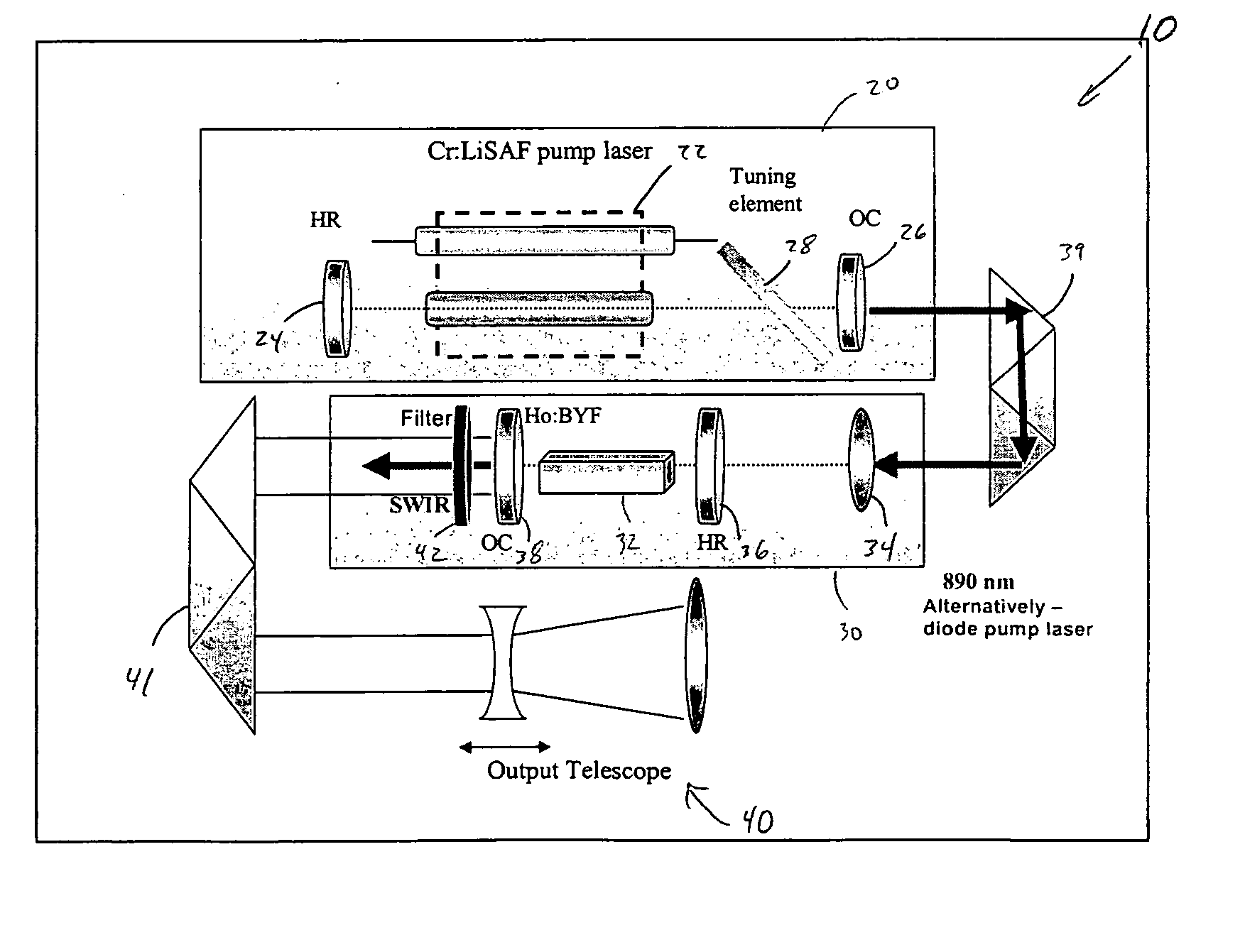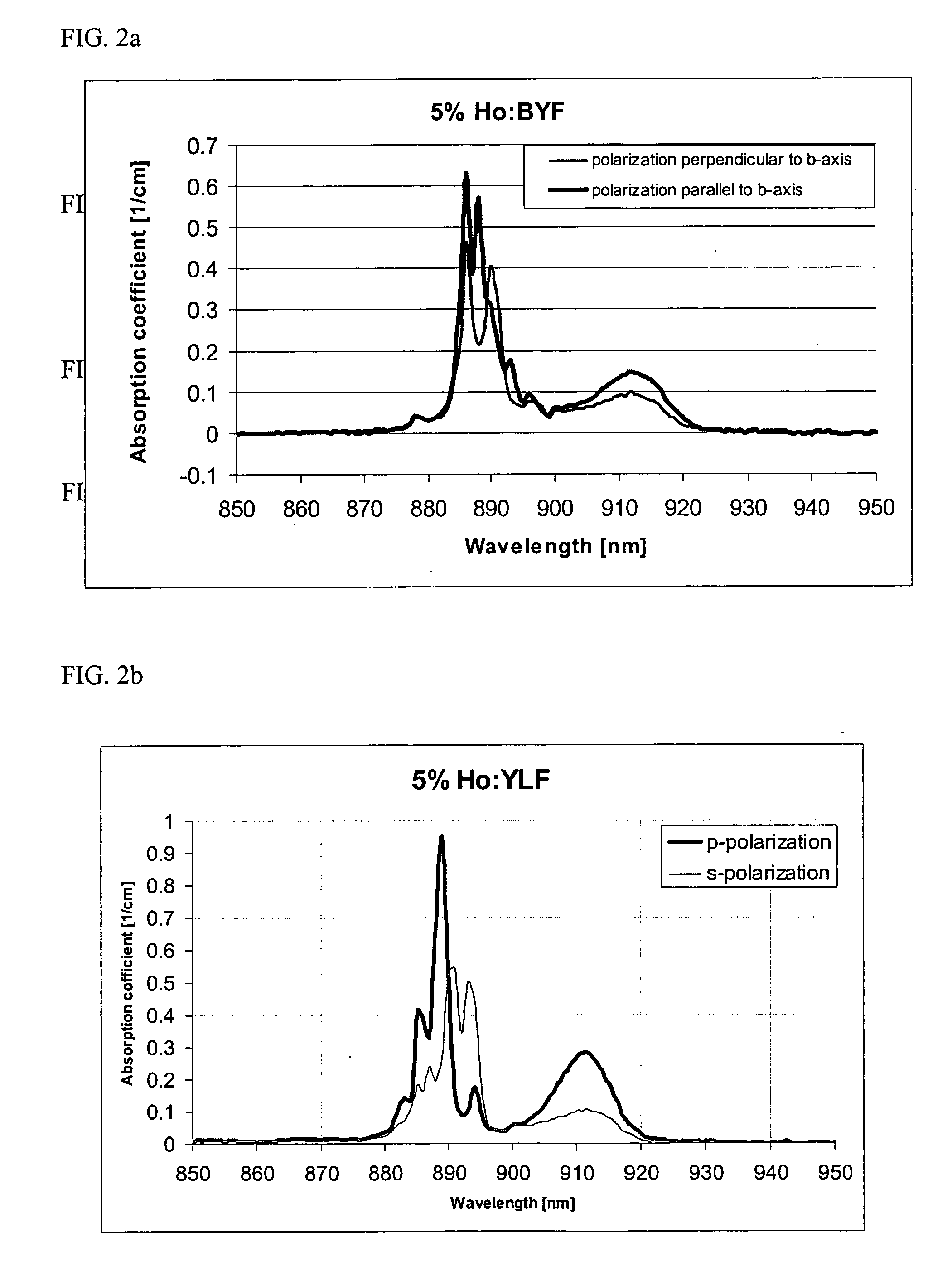Method and apparatus for producing an eye-safe laser
- Summary
- Abstract
- Description
- Claims
- Application Information
AI Technical Summary
Benefits of technology
Problems solved by technology
Method used
Image
Examples
Embodiment Construction
[0044] The present invention will now be described more fully hereinafter with reference to the accompanying drawings, in which some, but not all embodiments of the invention are shown. Indeed, the invention may be embodied in many different forms and should not be construed as limited to the exemplary embodiments set forth herein; rather, these embodiments are provided so that this disclosure will satisfy applicable legal requirements.
[0045] Referring now to the drawings, a description will be given in detail of various exemplary embodiments in accordance with the present invention. As described above, a laser may be constructed having a host material advantageously being a fluoride, such as BYF or YLF, although the host material may be comprised of other fluoride materials such as fluorozirconate ZBLAN glass, NaYF4 (NYF) and KY3F10 (KYF). An energy level diagram for Ho3+ with a direct resonant pumping scheme of a 1.67 μm laser is shown in FIG. 1. A 1.67 μm laser transition occurs...
PUM
 Login to View More
Login to View More Abstract
Description
Claims
Application Information
 Login to View More
Login to View More - R&D
- Intellectual Property
- Life Sciences
- Materials
- Tech Scout
- Unparalleled Data Quality
- Higher Quality Content
- 60% Fewer Hallucinations
Browse by: Latest US Patents, China's latest patents, Technical Efficacy Thesaurus, Application Domain, Technology Topic, Popular Technical Reports.
© 2025 PatSnap. All rights reserved.Legal|Privacy policy|Modern Slavery Act Transparency Statement|Sitemap|About US| Contact US: help@patsnap.com



